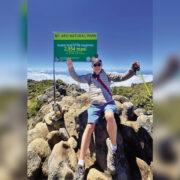I covered the presidential term, sailing through its choppy waters while chronicling President Cory’s wavy patterns of success and glory; laughter and grief; loss and devastation; troubles and genuine delights.
Through the oppressive summers, we fluttered around her—hot and heaving, sticky and dusty, marinated in different astringents, alcohol and talcum. The rainy days never dampened our spirits, only our shoes. As Palace reporters, we took note of changes, some exits (which grieved her) and a few entrances in a broad colorful exposure that prepares you for anything.
Each day brought unexpected twists: shouting matches behind the scenes among the biggies, intrigues among the lightweights, plus surprises which did not surprise the Malacanang Press Corp.
The daily coverage of the President, given her round the clock presidential schedule, saw more twists and turns than a roller coaster.
The Press Lounge is generally filled with activity, cigarette smoke, profanity and ribald humor. In a smoke-filled confusion, 27 sassy presidential reporters spend endless hours playing trick with words coming up with statements that could move you from sublimity to nausea. These specimens make me feel like a fossil, after all, most of them are children of my colleagues.
We’ve covered typhoons, tsunamis, earthquakes, volcanic eruptions, golf games of disdainful royalties, cabinet men’s wrongdoings between entrances and exits where vindictive reprisals from their loyal supporters cannot be discounted. With peculiar detachment, we soldiered because after all, these were all in a day’s work.
But the coup attempts in the Aquino regime, including the bloodiest yet, is worth recounting because the moral is not how People’s Journal Tonight reporters got to file powerful first person accounts. But a moral of how our editors knew some risks were not worth taking regardless of how they felt about seeing history firsthand or that competitive scoop and serving the public’s right to know. There were no hard and fast rules.
It was the bloodiest coup attempts on then-Pres. Cory Aquino and the closest we ever got into a war zone. It was as real as the tanks, the blood and the corpses.
A tale at once from terrifying, to surreal. It was December 1989—nights in Quezon City have been cold but that Thursday evening the air seemed condensed into a chill that stopped one’s breath. The morning after was sunny: the sky soft as a caress, the kind under which nobody should die.
Then suddenly, some sound split the ear: there came a cycle of incessant organized firing, a burst of cannon fire which shook one’s empty stomach.
Across the lane on Bohol Ave., we saw a soldier hit on the head. He was groaning, covering his face, his head open spurting out a fountain of blood. Beside him by the Coconut Bank, the barrels of other soldiers rifles were swaying like the branch of a tree stirred by the wind.
Together with photo editor Edong Reyes, we picked the wounded soldier as I screamed my lungs out for the People’s Tonight service jeep, parked way out, across Quezon Avenue. Amid bombing along the way, shaking and shuddering, the soldier and I sat together. The ride to V. Luna Hospital seemed like an eternity and there at last they took away his uniform and personal effects and handed them to me. I wanted to throw away the uniform to rid myself of the fear, disgust and terror, realizing the vileness of the world painfully associated with any soldier’s uniform.
Another soldier who got blown away and hit right in the middle of his chest, was in the next cot. He burst! As the good Lord is my witness. I have never seen a man burst before! His eyes were wide open, his mouth twisted, as if he were unable to bear the pain inflicted by an armalite’s bullet.
I’ve been told that an M16 bullet is bronze colored about two centimeters long and a half centimeter wide. Just one bullet is enough to kill a man. Oh, no need to fire a barrage. The bullet moves at a speed very off-balance so that when it hits, it doesn’t stop on the flesh like an ordinary bullet. No, it doesn’t go through an arm or leg. It twists, tears, cuts and in a few minutes, it empties the blood out of you. Experts call this a tumbling actions. In a third of tenth of a second, you’re a goner.
The People’s Tonight reportorial team was accompanied by the late, then chief of reporters Lino Sambo, whose outside casualness none of us possessed.
We proceeded to Camp Crame welcomed by soldiers fighting united beside its gates while PC chief Gen. Ramon Montano’s office went up in flames.
By 2:30pm, without sleep from our duty the night before, finding a toilet was a dramatic undertaking. All of us had a bathroom tale: we trudged along Santolan, stopping briefly by the Camp Aguinaldo gate to help the evacuees clambering over the concrete wall and its barbed wire, then to White Planes. In the scorching heat, as a part of Camp Aguinaldo burned, we stopped to help the evacuees along the Katipunan Road.
The sky was so blue, it hurt your eyes and the row of plants so green, the sight pierced your heart. The sun was merciless. The sprinkling of evacuees consisted mostly of children, old folks and pregnant women. A little boy let out a yell so powerful that it grew and swelled like a cloud. The infant I cradled, added her own shrieks and sobs. Other little throats joined the concert, rather the crying protest.
How would one convince or quell the civilians with the humanitarian idea that men are equal and life is beautiful?
Halfway across the world is a growing unrest and turmoil for the quest of freedom. In the cacophony of blistering, bluffing and threatening and blood shed, there is one voice missing—that of civilians who have been suffering from war sanctions, and will suffer more even when that war ends.
And how do you file a story like this, that has no…
First, the good news!






